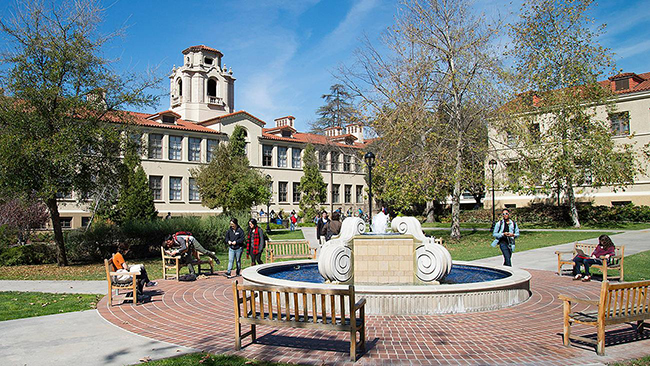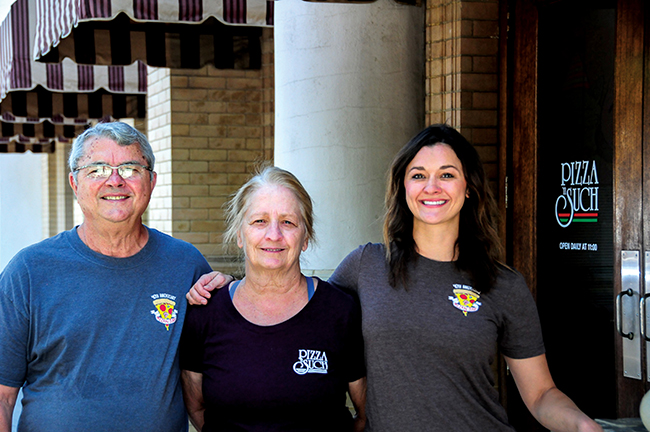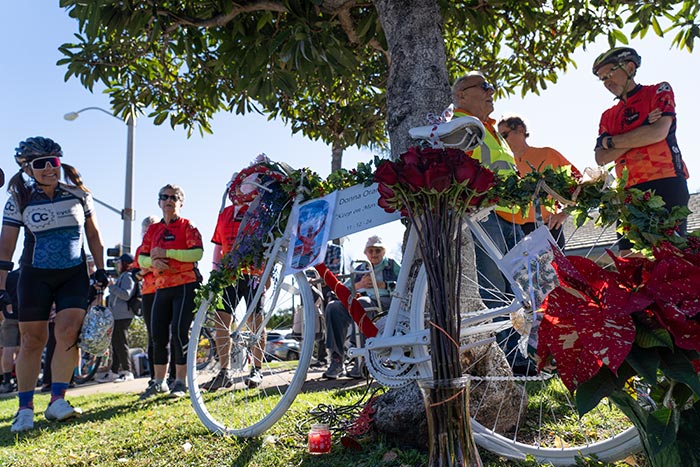County commits over $500 million to combat homelessness

Supervisor Kathryn Barger participated in a special meeting of the Claremont City Council on Monday where she was able to answer questions from the council and from the city’s residents. The meeting was an introduction of sorts for Barger who now represents Claremont following the redistricting process last year. Photo by Bryan Chan / Los Angeles County
by Steven Felschundneff | steven@claremont-courier.com
Last week the Los Angeles County Board of Supervisors approved a $532.6 million spending plan to combat homelessness countywide.
Approximately 87% of the money, $466.75 million, will be Measure H funds from the quarter-cent sales tax passed by voters in 2017. The remaining $65.86 million will be funded by the state.
About 43% of the allocation, or $227.3 million, will go toward permanent housing, including “a significant increase in permanent supportive housing services to continue serving about 13,300 individuals and families and begin serving an additional 7,700 individuals and families,” according to the Los Angeles County Homeless Initiative.
That commitment to lasting housing for formerly unhoused people strikes close to home, as the debate over Claremont’s first permanent supportive housing project, Larkin Place, continues with a series of meetings scheduled for the next few weeks.
As previously reported in the COURIER, Jamboree Housing Corporation has proposed a 33-unit, four-story affordable housing complex on Harrison Avenue for formerly homeless people with some type of disability.
Another $163.3 million, or 30% of the funding, will be spent on interim housing to help sustain about 5,000 of the county’s shelter beds. The regions shelter capacity on an average night is 25,000 beds.
The final $20 million will go to local jurisdictions to cover the unique set of circumstances and homeless service needs in that community, doubling the amount allocated last year.
“We are at the halfway mark for Measure H spending and doubling down on investing in our housing first approach, 73.4% of the budget is allocated for sustaining and increasing permanent and interim housing. Housing is the one strategy that will stop the tidal wave of people living on our streets. The Homeless Initiative’s budget demonstrates the commitment to creating housing and providing much needed services for our unhoused Angelenos,” Board of Supervisors Chair Holly J. Mitchell said.
“Measure H provides a critical lifeline of funding to our homeless services delivery system. I could not imagine where we would be with out it, frankly,” Mayor Jed Leano said.
Therein lies a conundrum, because as critical as this funding source may be, Measure H has a bit of an image problem. As it reaches the halfway point of its 10 year lifespan, cities and the county have poured millions of Measure H dollars into new and ongoing programs, yet homelessness appears to be getting worse.
“The one thing that is really difficult about this problem is while tens of thousands of people are moved from homelessness into housing, there is a greater amount of people entering homelessness at the same time. So, every single year the amount that are counted as unsheltered goes up. And that is because of housing instability,” Leano said.
So what is the solution? Cities throughout the region, including Claremont, have to build more housing.
According to pre-pandemic data from the California Housing Partnership, there is a shortfall of 499,430 affordable and available rental homes in Los Angeles County. To further illustrate how many people may be on the brink of homelessness, 78% of extremely low income households in Southern California are severely cost burdened, meaning more than half of their income goes to rent.
“It’s a factor of skyrocketing housing prices and [low] affordability. Ninety percent of low income people don’t live in subsidized, price controlled housing. They live in market rate housing. So when rents skyrocket, more people become homeless. When there is an inadequate supply of housing more people become homeless,” Leano said.
During a joint meeting with the Claremont City Council on June 9, Supervisor Kathryn Barger spoke about the Blue Ribbon Commission on Homelessness and said she is encouraged that its recommendations would alleviate frustration in the communities she serves over the allocation of Measure H funds.
“We’ve dedicated a lot of our time, attention, and resources to address the homelessness crisis,” Barger said in a statement released last Tuesday. “We must renew the public’s confidence in the county’s ability to serve both our communities and the people who are living on our streets. While Los Angeles County is also in the process of implementing the Blue Ribbon Commission on Homelessness’ recommendations, today’s vote reinforces my commitment to work alongside all 88 cities in the county to find localized solutions.”
Funding and building subsidized housing remains only part of the solution, as the region still needs hundreds of thousands of market rate units to keep up with demand, as has been illustrated by the sharp increase in the median home price, and median rental cost, over the last few years.
“There is a major miscalculation when people oppose housing. They say that what we need is affordable housing not market rate housing. The truth is that in California we have deficits of both. And when there is not enough market rate housing, prices skyrocket,” Leano said.
The first time Measure H money was allocated to cities, Pomona, La Verne and Claremont went in together as a cohort and won the single highest award, $1.2 million, of any city or group of cities in L.A. County. The main reason the cohort did so well was because it went into the application process with a clear plan.
“Claremont really was always at the forefront of bringing Measure H dollars home. Starting in 2019 we always received high awards and that continues,” Leano said. “Claremont was among the first and among the highest award recipients. And that is because we have a robust prevention and early intervention program run through the Joslyn Center. We have a robust housing navigator system that partners with Tri-City Mental Health, and then we have dedicated shelter beds and motel vouchers that were funded by that program.”
Measure H dollars enabled the city to hire Richard Franco as a full-time housing navigator through Tri-City Mental Health. He is “the bread and butter of our homeless delivery system,” with one person and one phone number for people to call looking for shelter resources.
“He finds beds, that is what he does. Beds or placements for people who are unhoused,” Leano said.
Before the city hired Franco, the burden of finding placements or qualifying for vouchers for the unhoused in Claremont fell on the shoulders of former human services director Ann Turner.
“We always knew that was an unsustainable model. You can’t have someone who is in charge of employees running all of your parks and senior programs also being your homeless services navigator.”
It’s yet unknown how much money the city will receive from the current Measure H funding, which is part of the county’s fiscal year 2022-23 budget.
Anyone who is currently unhoused or has a related need can contact a Tri-City community navigator at 888-436-3246, Monday through Friday 9 a.m. to 5 p.m.










0 Comments